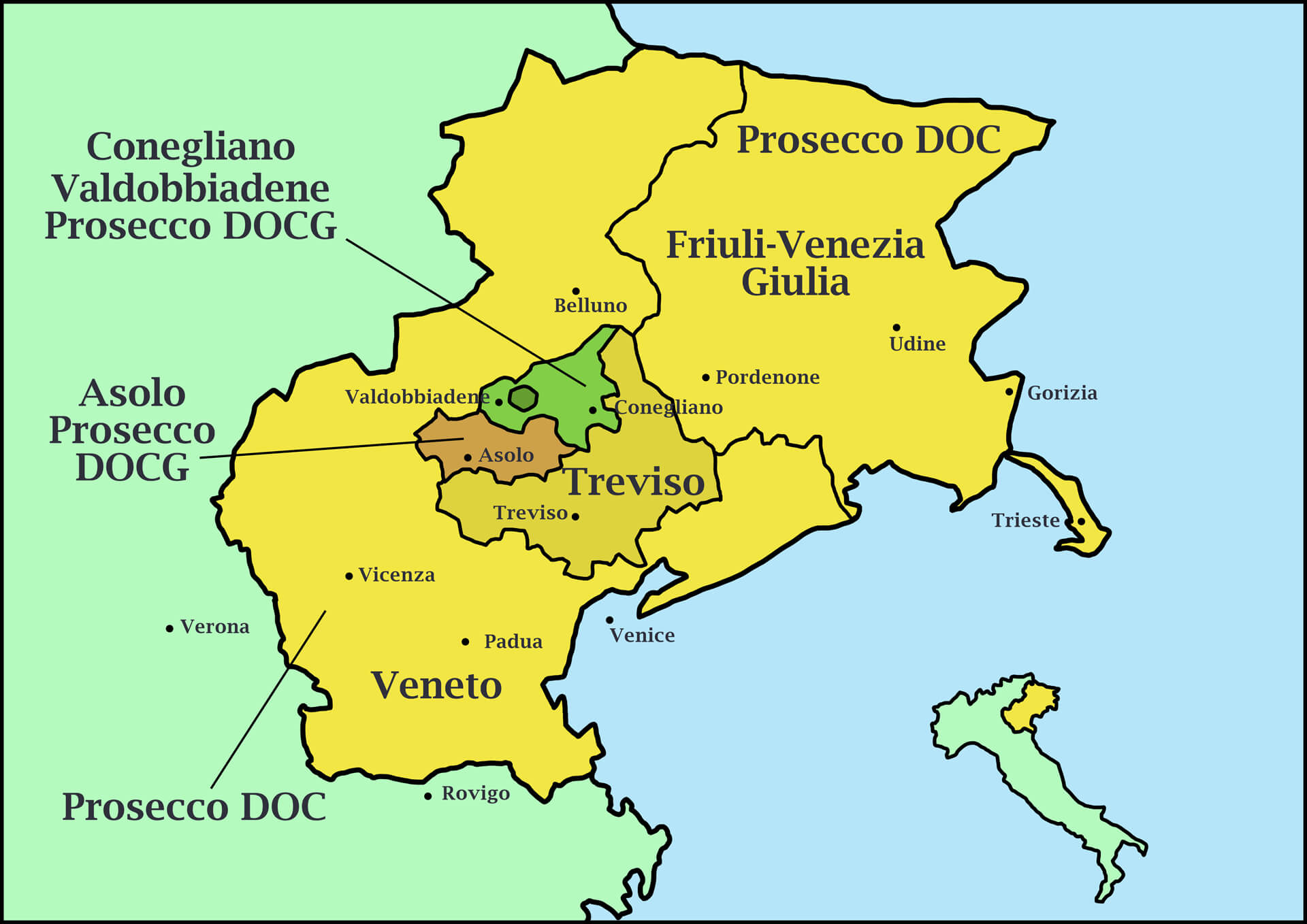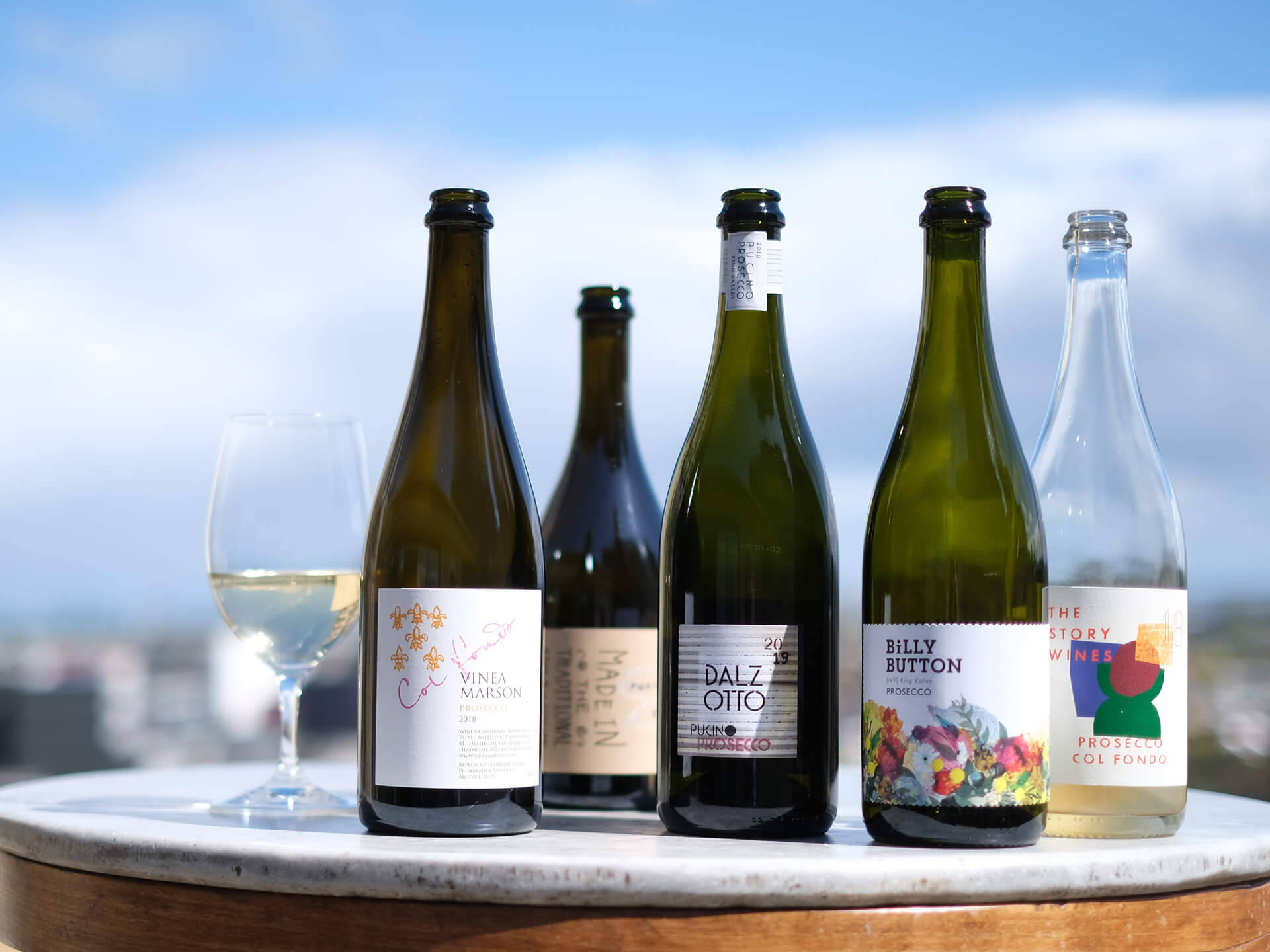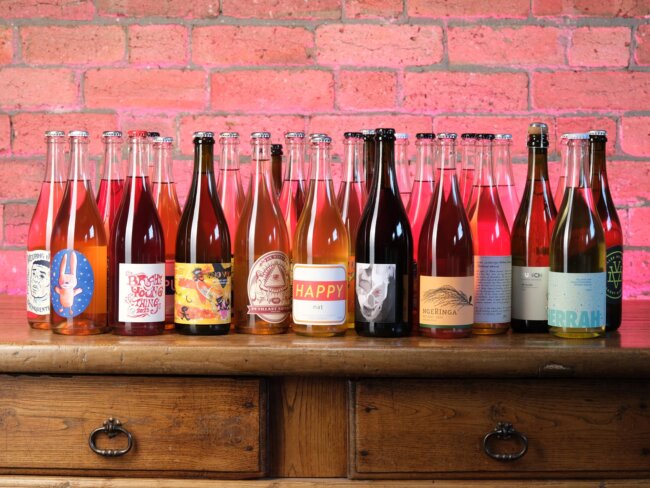Prosecco is either loved or hated. For some, it is a symbol of celebration and conviviality. For others, it is a wine with a bad reputation. However, the success it has achieved worldwide – starting as a simple and pleasant product from Italy’s Treviso hills – is undeniable. But Prosecco is no longer synonymous with Italy, influencing countries of the New World, such as Australia. In just 20 years, there has been an exponential growth of Australian prosecco, with excellent products opening the doors to both local and international markets.
In Italy, Prosecco is a DOC or DOCG sparkling white wine produced in Veneto and Friuli-Venezia Giulia using at least 85 percent of the glera grape (formerly just called prosecco). The two most famous denominations of the Treviso hills, in Veneto, are Conegliano Valdobbiadene Prosecco DOCG and Asolo Prosecco DOCG, while Prosecco DOC is produced across the Friuli-Venezia Giulia region and in five provinces of Veneto.
![]()
Styles of Prosecco
Historically, Prosecco was a still wine. In the 1800s, winemakers began to experiment with col fondo (the ancestral method) and later with metodo classico (the Champagne method). It wasn’t until the 1950s that Prosecco was made with the Martinotti/Charmat method, which is mandated by law today.
The latter method involves a second fermentation in pressurised tanks (autoclaves), resulting in strong fruity notes that enhance aromatic or semi-aromatic grapes, such as glera. Prosecco is typically slightly floral with young white fruits, and has a marked acidity, accentuated by the bubbles.
The style of col fondo has been successful in recent years, particularly in the Conegliano Valdobbiadene area. The ancient method leaves a deposit of lees in the wine – after completing fermentation in bottle – giving the appearance a more veiled, or hazy, appearance. This should not be seen as a defect, but as a value. It represents the naturalness of the wine itself, little worked in the cellar and extremely digestible. The bouquet is faithful to the peculiarities of Prosecco, with intense floral and fruit notes. However, the presence of yeasts also give toasted and buttery hints.
Today, tranquillo and frizzante (both having lower pressure and a softer bead) wines are still produced in small quantities, but they are less popular. There are also various sweetness levels for Prosecco, from the driest (brut nature) to the sweetest (demi-sec), each with its own characteristics.
The Prosecco grape(s)
Fourteen clones of glera and five clones of glera lungo (long glera) are currently registered in the Italian National Variety Register. The former, which are more widespread, belong to the ancient glera tondo grape and are typically lower cropping than glera lungo clones. The wines made with glera lungo are spicier and less floral than those made with glera.
Additionally, other local varieties can be used in small part, as can the international grape varieties chardonnay, pinot bianco, pinot grigio and pinot nero (vinified only in white). The traditional local varieties are minor ones, but they are precious for blending. Verdiso is used to increase the acidity and flavour of the wine, perera is used to enhance aroma (pear notes being a feature), and bianchetta is helpful in cold years because it ripens early.
Prosecco made in Australia
Prosecco was first grown in Australia in the late 90s by pioneers like Otto Dal Zotto, owner of Dal Zotto Wines. Today, prosecco is grown across 11 Australian regions. Most are located in north-eastern Victoria, including the King Valley, where Italian immigrants turned more resolutely to commercial viticulture following the demise of the local tobacco industry.
Australian Prosecco production has grown over time. Today, more than 120 hectares are cultivated for a production of 20 million bottles. In the New World, Australia ranks as the second largest producer, preceded by Brazil (173 hectares) and followed by Argentina (10 hectares). As a comparison, the production of Prosecco DOC is about 439 million bottles from 24,450 hectares, while Conegliano Valdobbiadene turns out about 92 million bottles from 8,088 hectares.
In the King Valley, the Italian roots are strong, and the wineries unite together to promote the area and its products. There is even a “Prosecco Road”, a route for enjoying the hospitality and prosecco across wineries in the region. The approach of King Valley makers should be a positive example for many Italian wineries, with Australian prosecco inexpensive but certainly not of poor quality.
Prosecco, a grape name no more
The extraordinary world-wide success of Prosecco from WW2 to the boom of the 90s generated counterfeits both in Italy and abroad. Additionally, even real Prosecco played a role in tarnishing its image, with perhaps the most famous example being the Paris Hilton endorsed Prosecco (real Prosecco DOC, but packaged by an Austrian company) launched in 2006, which was sold in cans in Autogrills across Europe. That seems to have been the final straw that saw the wine laws changed.
![]()
Paris Hilton advertising Prosecco hasn’t done good things for the perceived quality of the wine.
The Prosecco DOC with its production areas of Veneto and Friuli-Venezia Giulia was established in 2009, with Conegliano Valdobbiadene and Asolo Prosecco being elevated to DOCG status the same year. Prosecco became a mark of origin, while the grape went back to being called glera, its ancient name, used back in Roman times and in some theses of the 18th century. This radical change has resulted in a legal challenge (still in progress), affecting all New World makers who still use prosecco as a varietal name.
Is a rebirth possible?
The existence itself of Prosecco DOC inevitably damages the image of the denomination by promoting an inexpensive and often low-quality wine in foreign countries, obscuring the quality DOCGs. Furthering the dilemma, from October 2020 the marketing of Prosecco Rosé DOC (allowing an inclusion of pinot nero vinified as red wine) will be allowed, which is already having devastating implications for the image of Prosecco.
The consortium of Conegliano Valdobbiadene objected to the modification of the laws, stressing the identity, culture, history and quality of Prosecco by observing that pinot nero is not typically grown in their zone, but they have no sway over the final decision. The consortium has already been evaluating renouncing the word Prosecco on the label, favouring the historic production area as a guarantee of quality.
In respect to legally challenging the use of “prosecco” as a varietal term, preventing the use of the name in countries like Australia would be like banning names like sauvignon blanc or chardonnay. The situation is not comparable with that of Champagne, because Prosecco didn’t indicate a geographical area until 2009. But rather a grape variety, which among other things was cultivated in Australia over 20 years ago.
In any case, the biggest problem with Prosecco is the Prosecco DOC denomination, which devalues its image in the world. The confusion generated by the change of name of the grape and the creation of the Prosecco DOC consortium that devalues the same product is the result of the Italian political issues, not the work of the producers, who seek to obtain quality products, both in Australia and in Italy.
How does Australian ‘Prosecco’ compare, and does it have to?
Although the production methods for most of the wines are similar, different soils and climates make Australian prosecco incomparable to the Italian, both with their own well-defined identity. But is it really necessary to compare them? The effort of the producers who seek quality through the working of the land and respect for the vine should be the only common characteristics between these two types of wines, and currently they are.
The Top Australian Proseccos
We blind tasted a lineup of Australian proseccos, and here are the top five wines on the day.
![]() NV Billy Button Prosecco, $22
NV Billy Button Prosecco, $22
Jo Marsh makes a raft of varieties under her Billy Button label, with Italian ones dominating. She makes no less than five proseccos, and all in very different styles. From metodo classico, to col fondo, to this, a classically modern take on the grape.
The nose is a real explosion of flowers such as rose, acacia and yellow fruit, whilst the palate reveals a remarkable freshness, with a persistent and elegant finish.
2019 Dal Zotto ‘Pucino’ Prosecco, $26
Inspired by his hometown of Valdobbiadene, Otto Dal Zotto was the first to plant the prosecco grape in Australia, in the King Valley. Dal Zotto make two wines under the ‘Pucino’ banner, a non-vintage, and this, their vintage wine.
This wine presents with aromas of yeast, linden and lemon that offers intrigue, and continues on the palate with grace. It has a beautiful citric persistence and energetic finish.
2018 The Story Wines Prosecco Col Fondo, $29
Rory Lane makes wines from far-flung parts of Victoria, from the windy to cool of Henty in the south-west to the lofty cool of the north-east, where this hails from. Lane doses dry wine with some fermenting juice before bottling to generate the fizz in bottle. Made without added sulphites.
This wine has a visible texture and a unique identity characterised by exotic fruit, apricot and banana, with slight hints of yeast in the background that closes a refreshing finish.
2019 Dal Zotto Col Fondo, $29
From the pioneer of prosecco in this country, this is one of half a dozen proseccos made by Dal Zotto. This is their ode to pre-industrial methods, made in the col fondo style. Like all their sparklings, it is bottled under crown seal. The fruit of this wine is crunchy and refined, white floral notes.
2018 Vinea Marson Col Fondo Prosecco, $30
Mario Marson is based out of Heathcote, where he specialises in nebbiolo and sangiovese, as well as wines inspired by the whites of Friuli. He goes to Victoria’s Alpine Valleys for prosecco, which he makes in both metodo classico and col fondo styles.
The nose is citric, with well-present yeast notes, toasted bread, butter, and toasted almonds. The wine has an expressive texture that is soft and vibrant at the same time.
![]()
Mirko Pastorelli is part of the Association of Professional Italian Sommeliers (ASPI). He has had various experience in the hospitality industry and event organization both in Italy and abroad. He writes about cigar and drink pairings on the web magazine Gusto Tabacco, both in Italian and in English. He moved to Australia in March 2020 to work as a sommelier at Vue de Monde, and then the pandemic hit…



 NV Billy Button Prosecco, $22
NV Billy Button Prosecco, $22




